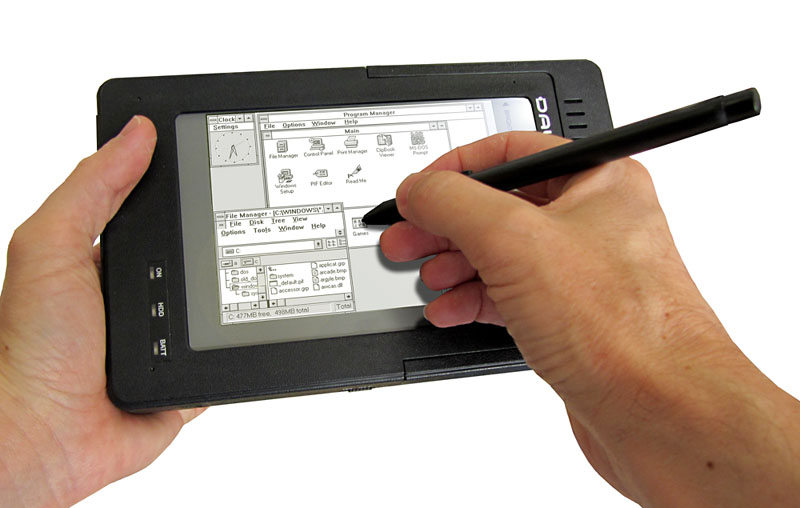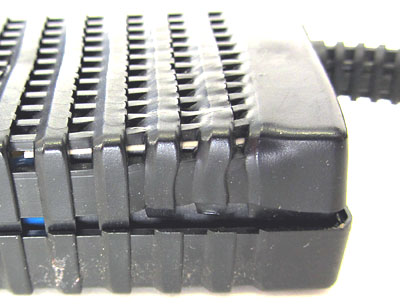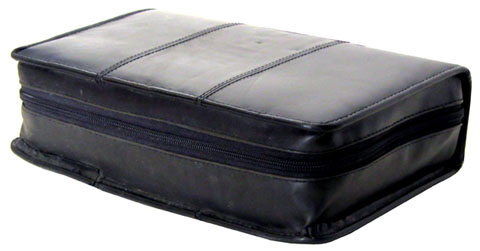|
|---|
| Dauphin DTR-1 |
| Introduced: | January 1993 |
| Available: | May 1993 |
| Price: | US$2,495 |
| Size: | 9 x 5.5 x 1.5-inches @ 2.5 lbs |
| CPU: | Cyrix 486SLC @ 25 MHz |
| Memory: | 4MB-6MB RAM |
| Interface: | cordless pen, external keyboard |
| Display: | 5 x 4-inch backlit grayscale LCD |
| | 6-inch diagonal |
| 640x480 VGA graphics |
| Ports: | serial, parallel, video |
| modem, ethernet, PS/2 keyboard |
| Storage: | internal 20MB or 40MB HD |
| | optional external floppy drive |
| OS: | Microsoft DOS 6.0, Windows 3.1 |
| Power: | 12vdc, 2amp, tip positive |
| |
|



 For $2,495, you received the DTR-1 hand-held computer, keyboard, pen-stylus, and a carrying case.
For $2,495, you received the DTR-1 hand-held computer, keyboard, pen-stylus, and a carrying case.

